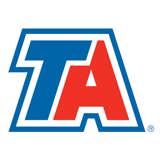When snow starts falling and ice starts forming, you know one thing for sure: your tires better be ready. Even the best, new tires can be no match for thick snow and slick, ice-covered roads. Your tires can lose traction in these road conditions. That’s when you need to consider your options to improve your traction during hazardous winter weather.
Know Your Options
There are three popular options when it comes to traction devices:
Snow Chains - Snow chains are made from quality metal, making them highly durable and reliable. They can cut into thick snow and provide excellent traction. Snow chains are heavy and can add significant weight to your truck. They also take more time to install and remove, and if done wrong, can damage the tire and truck.
Tire Socks - Tire socks are fabric tire covers that provide additional traction, though not as much as snow chains. They are lightweight and do not take up a lot of storage space. Although the material is strong, socks are more prone to wear and tear. Tire socks are easier to install.
Nothing - A third option is to simply wait for the plows to take care of the road. Both snow chains and tire socks do take time to install and remove, and the top suggested safe speed with the devices installed is only 30 mph. Some drivers choose to pull over instead of using traction devices.
Know When to Use Traction Devices
Packable snow is fun for snowballs but not for driving. When roads become covered in ice, snow or slush, your tires can lose traction. Snow chains and socks can help you break up the elements and provide traction to get to your destination.
If you decide to brave these conditions without snow chains or socks and get stuck, snow chains or socks can also help free you by cutting through the ice, snow and slush holding your truck hostage.
Snow chains will damage dry roads and tire socks do not work in dry conditions. Using either on a dry surface may cause premature failure or damage.
Know the Law
Between Sept. 1 and May 31, most states have some type of snow chain regulations, and most of the regulations differ. Some states mandate the use of snow chains on certain routes or during certain weather, while others just want you to have traction devices to help your tires in case the roads get rough. The department of transportation (DOT) will typically notify you when traction devices are necessary.
It’s important that you know these laws, and always have the appropriate gear in your truck. Between September and May, it is common to find roadside checkpoints where officials check to see if you are following the snow chain regulations for that state. Before you start your route, check out the laws in the states you will be driving. Failing to do so may result in fines.


